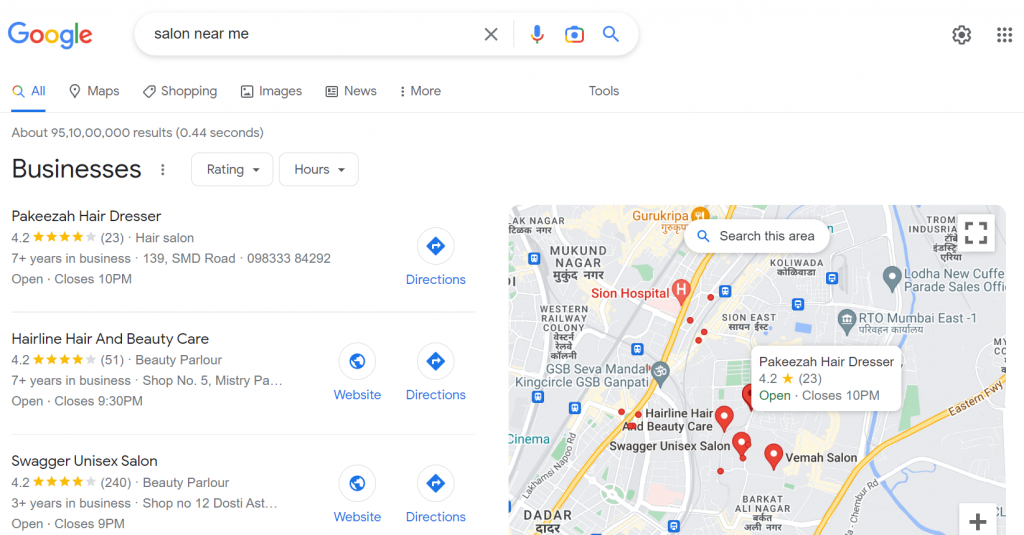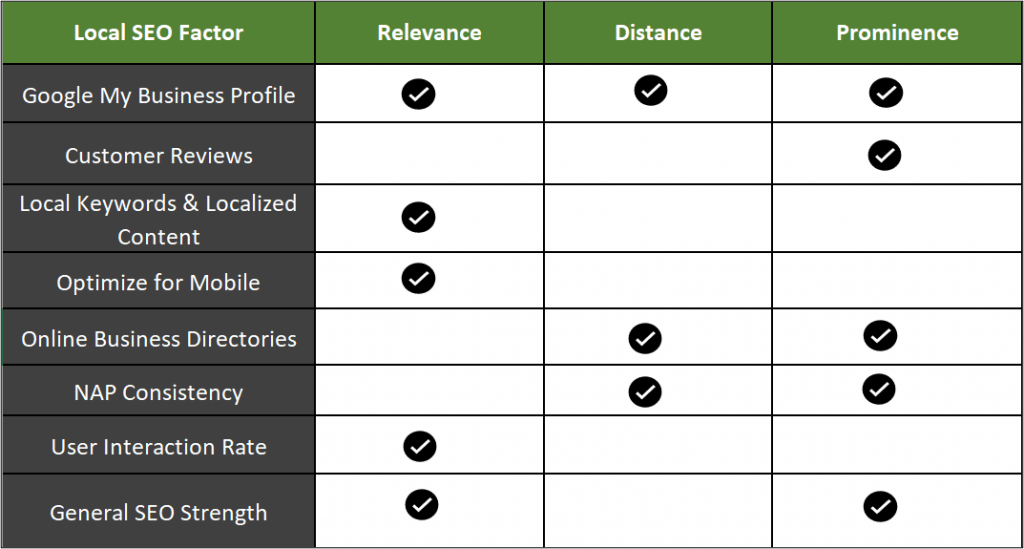

There is no dearth of literature around local SEO. One quick search with the keyword “local SEO strategy” provides you with hundreds of write-ups around the various factors that influence local search rankings. However, these factors often seem like a myriad of stand-alone tactics which all make sense but don’t seem to provide direction on the fundamental factors that drive local SEO or necessitates these tactics as important tasks. So, it becomes imperative to understand the three key influence pillars on which local SEO stands and map the various tactics to these pillars. In this discussion we aim to cover the following points: –
Let’s start by talking about who needs local SEO and then define what it means. Primarily, businesses that have a physical presence in the form of stores, offices, etc. and want to attract local footfalls need to do local SEO on their websites. In simple words, it is the practice of optimizing a website so that it can get more local traffic, leads, etc. that will eventually drive business to the physical stores. The idea is to be visible before a user who is trying to find a physical location (e.g., a store or an office or an institution) on the search engine to meet a specific need. The user could be searching with queries like “hospitals near me” or “salons open now” or “best restaurants in MG Road”. Each of these queries provide a signal of local intent to the search engines and each of these generate local pack or map pack results. While local results could generate from any device mobiles need a special mention here because nearly one-third of all mobile searches are related to location. So, an organization’s marketing plan for mobile users could have a significant bearing on local SEO (below: three listings show up in the map pack) on the SERP (Google search result page).

So, the whole game of local SEO revolves around the objective of related business owners aiming to get listed in these local pack results for related local intent searches. E.g., a salon owner would want to be visible in the map pack for the “salons near me” query.
There are various statistics that corroborates the importance of local search e.g., 46% of all searches in Google have a local intent, 29% of SERP in Google contains local pack results, etc. But perhaps the most important point for businesses, which is rather subjective in nature, is to realize that local searches are essentially bottom funnel or purchase focused searches. The statistic that comes close to support this hypothesis is that 76% of consumers who perform local searches on their phones end up visiting a store the same day.
As mentioned before, all local search factors is quite a daunting list of “to-do” things. Among some of the most significant tactics would be Google My Business Profile, Customer or User Reviews, Localized Content, Mobile Optimization, Online Business Directories, NAP Consistency, etc.
It is obvious that each of these factors have a common goal to attain a position in the map pack but how are these factors different from each other in the way they contribute to local pack rankings. Do these factors provide some signals to the search engine? What are some fundamental signals that Google (search engine) needs to get to decide that a particular business is the best choice for a local search query? What we are probably looking forward to is a framework that helps us understand and theme these local SEO factors in a more effective way. According to Google there are broadly three key influence factors that determine local search rankings.
No matter what tactics we employ they must fall under either of the above three key pillars. So, let us deep dive into the local SEO factors to understand how they contribute to local ranking.
The key elements within GBP that impact local pack are as follows:
There are various other factors within GBP like reviews, phone number and business hours that can also have an impact on Prominence.
There are broadly three types of reviews: 1st party reviews i.e., reviews on the company’s website, 3rd party reviews i.e., reviews on sites like TripAdvisor, PolicyBazaar, etc., and Google reviews i.e., reviews in the company’s GBP. Reviews can go a long way in signaling Prominence to the search engine for local pack listing.
All the three broad SEO factors On Page & Content, Authority and Technical SEO that help a website rank organically also play a critical role in local ranking. On Page & Content make the business relevant for local searches. Authority and Technical SEO send the signals to Google around the website’s popularity and trustworthiness.
Citations or mentions of local businesses in directories like Yelp, Yellow Pages, Chamber of Commerce, etc., can have a significant impact in making a business prominent for local search.
The NAP of a business should be same across its website, GBP and all the directory listings. This again adds to the prominence of a business by providing consistent signals to Google about the business.
Both organic and local ranking benefit when users interact with a business’ online assets. Actions such as clicks, engagement time, photo views, navigation to website, etc. signal the search engine that the business is relevant for the user.
Below is a snapshot how different local SEO factors contribute to rankings on the local pack of SERP.

While the above table gives us a good sense of the how the different factors contribute to map pack rankings there can’t be a cookie cutter approach in local SEO. It is quite possible that not all these factors would be in play every time a local listing shows up on the map pack. Further, the importance or weightage of factors may greatly vary for industries, devices, locations, etc. We must also remember that the play of local SEO is very wide and extends beyond the online tactics. A strong offline presence, actual relationships with customers, rewards and recognition in the physical world can all do wonders in meeting the requirements of the three local SEO pillars of Relevance, Distance and Prominence.
Get in touch with our client success team to understand more about local SEO rankings and get a deeper look into your website’s SEO. Our experts are ready to help you at growth@performics.com
Subhashis Guha (Senior Vice President – International Business, Performance Marketing – Performics India)
If you’re interested in exploring how Google SGE (Generative Search Experience) is changing the search landscape in India, be sure to check out our in-depth analysis.
Google introduces generative AI to enhance Search capabilities in India